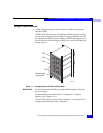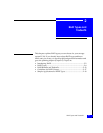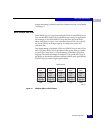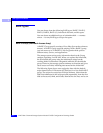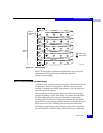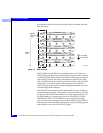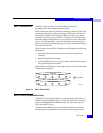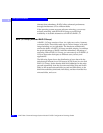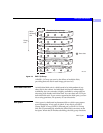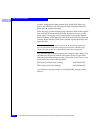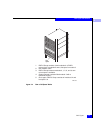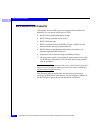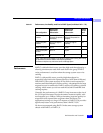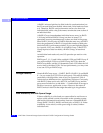
2
RAID Types
2-7
RAID Types and Tradeoffs
RAID 1 Mirrored Pair
A RAID 1 Group consists of two disks that are mirrored
automatically by the storage-system hardware.
RAID 1 hardware mirroring within the storage system is not the same
as software mirroring, remote mirroring, or hardware mirroring for
other kinds of disks. Functionally, the difference is that you cannot
manually stop mirroring on a RAID 1 mirrored pair, and then access
one of the images independently. If you want to use one of the disks
in such a mirror separately, you must unbind the mirror (losing all
data on it), rebind the disk as the type you want, and software format
the newly bound LUN.
With a storage system, RAID 1 hardware mirroring has the following
advantages:
• automatic operation (you do not have to issue commands to
initiate it)
• physical duplication of images
• a rebuild period that you can select during which the SP recreates
the second image after a failure
With a RAID 1 mirrored pair, the storage system writes the same data
to both disks, as follows.
Figure 2-4 RAID 1 Mirrored Pair
RAID 0 Group (Nonresident Array)
A RAID 0 Group consists of three to a maximum of sixteen disks. A
RAID 0 Group uses disk striping, in which the hardware writes to or
reads from multiple disks simultaneously. You can create up to 32
LUNs per RAID 0 Group.
Unlike the other RAID levels, with RAID 0 the hardware does not
maintain parity information on any disk; this type of group has no
EMC1817
Second disk
…
…
First disk
User data
1
1
2
2
3
3
4
4
0
0



